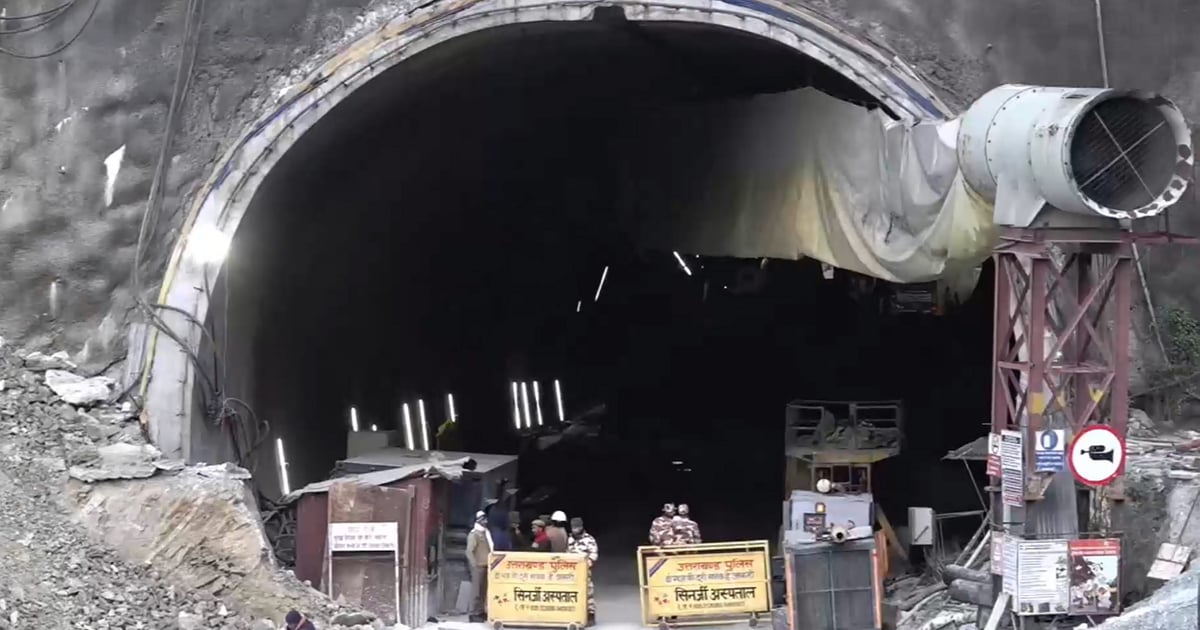Uttarkashi Tunnel Rescue: Complete arrangements have been made to rescue 41 laborers trapped in the Silkyara tunnel in Uttarkashi, Uttarakhand, on 28th November, the 17th day of the incident. On November 28, the rescue team reached the workers trapped in the tunnel and the work of laying pipes in the tunnel was also completed. Here, a medical camp has also been set up inside the tunnel to check the health of the workers after they come out. A team of doctors is also present. Experts say that the workers will be taken out of the tunnel one by one. This work may take the whole night. The workers will be taken out of the tunnel in an interval of three to 5 minutes.
For the Silkyara rescue mission, many teams worked day and night with the expert panel, only after which the rescue was ensured. After a lot of hard work and several failures, the rescue team succeeded in laying the pipe into the tunnel. Now the workers will be taken out of the tunnel through the same pipe. Let’s take a look at the entire rescue process.
The rescue operation has been possible only with the help of rat mining in Bundelkhand region of Uttar Pradesh and Madhya Pradesh. The rescue operation started with drilling. Excavation was done using auger drilling machines. However, after the auger machine failed, digging was done by hand.
Rat miners dug like this
On Monday night, under Rat Mining, a group of miners entered the pipe and crawled to the debris. Under rat mining, one person did the digging, the second person put the debris in a trolley and the third person placed the debris trolley on a shaft and took it out of the tunnel. Miners were digging an average of 0.9 meters per hour. Officials said that the minerals the rats were mining were shifted every three hours. By 3 pm on Tuesday, they had drilled 12 to 13 meters to reach the workers. Altogether 12 rat miners were brought who were from Uttar Pradesh and Madhya Pradesh.
How will people be taken out of the tunnel
According to officials, once the drilling is done, wide pipes are pushed through the debris to create the tunnel. Once this was done, a team of the National Disaster Response Force (NDRF), wearing oxygen kits, crawled through the pipes carrying wheel-fitted stretchers, a rope and oxygen kits for the workers and reached inside the tunnel. After this, doctors and paramedics were sent inside on wheel-fitted stretchers, after which they examined the trapped workers. All the workers will be brought out of the tunnel through pipes. The workers will be taken out one by one by tying the stretcher with ropes from both sides. NDRF personnel will be the last ones to come out of the tunnel. The entire operation will last for three hours.
How food and other essential items were delivered to the workers
Earlier, food was being sent to the stranded people through compressed air through a 4-inch pipe. On November 20, rescue workers installed a large six-inch pipe to transport solid food. Using the earlier pipe, food items like dry fruits and roasted gram were being sent to the stranded people. With the new pipe, rescue workers are sending solid food items like chapatti, vegetables and fruits for their nutrition. Cylindrical bottles and a special tray attached to a rope were used to send the food to the other side.
Auger machine played an important role
Auger machine that has a helical screw-like blade, known as an auger bit. It rotated to create a hole while going into the material, was crucial in completing the operation as it drilled 55 meters before breaking on Friday. In the Silkyara tunnel operation, American Auger Machine 600 to 1200 high powered fast and vigorous drilling was used. It has been manufactured by American Augers, an American company specializing in trenchless technology. The auger machine can drill a hole of 5 to 10 feet diameter at a time.
The debris or material brought up by auger machines during drilling is generally removed using the design of the auger. The auger has a helical screw-like blade that not only drills into the object but also pulls the dug object out of the hole as it rotates. The spiral design of the auger flights helps in moving the material up and away from the drilling point. It took one hour to drill one meter drilled by the machine and 4 to 5 hours to fit it into the pipes. In the Silkyara accident case, 900 mm and 800 mm pipes which were six feet long were inserted using an auger machine and the two pipes were welded to form the tunnel.
Input- wreath

